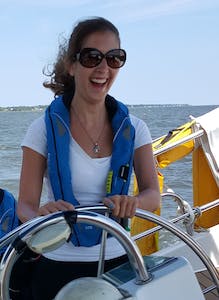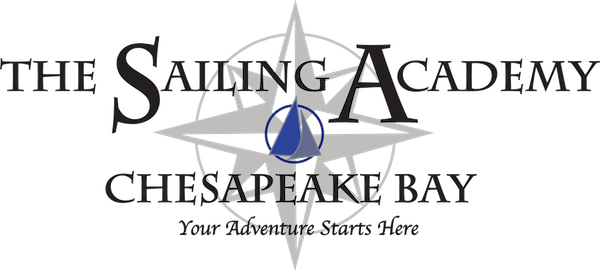Teaching At the El Salvador Sailing Federation
Bringing Hope Through Sailing
Second thoughts flashed through our minds as our van traveled down a very bumpy mountainous road to our sailing destination. The foliage was so thick it was hard to see the path through. Eduardo, our skilled driver, navigated the switchbacks like a pro as the van lurches back and forth.
Usually, I travel down to the waterfront, and not up. Why were we climbing to the waterfront? Our host explained that we would be sailing in Lake Ilompango, a huge water-filled caldera. My bewildered look brought further explanation: A caldera is a crater left behind by the collapse of a volcano after an eruption. It was somewhat ominous sailing inside a volcano!
There are places where steamy bubbles still come up from the depths. I was told that after we leave the shoreline it drops off to unknown depths. In some parts of the lake, the bottom is yet to be discovered. I found myself longing for the dangers of sudden Chesapeake Bay squalls. I’ll take those any day over the fear of a sudden molten lava ride down the mountain range.
The beauty that we encountered at the lakefront was indescribable. We were rewarded with some fantastic sailing on Lasers, Optis and J24s. I am still wondering how they got the boats to this incredible location. A news crew from a San Salvador TV station came out to do a story as we taught on the lake. Our greatest rewards were the friendships that developed with the nationals during our trip.
PHLAS was asked to teach sailing in El Salvador at The El Salvador Sailing Federation. The State Department’s Travel Warning is concerning, especially because El Salvador is one of the most dangerous countries in the world. The high crime rate is largely due to gang activity that plagues much of the country. Families fear when their children reach their pre-teens, the age gang recruitment starts in many neighborhoods.
With 60% of the population living in poverty, opportunities for many young people are slim to none. What can a sailing school do that would impact the lives of those so seriously in need? Even if we can provide hope for a handful of students the trip would be worthwhile.
PHLAS instructors helped to coach a group of young sailors from the poor communities around Lake Ilopango. During the “chalk talk” we shared that although they were sailing in a remote location in El Salvador, they are part of an international community of sailors. Sailing skills can open doors for the future. By building their sailing skills and certifications, they are learning marketable skills that are needed at resorts, clubs, sailing schools and charter companies all over their region of the world.
The personal confidence and teamwork gained by competitive sailing will also help them excel in any field they pursue in the future. Many young people feel like they are at the mercy of their situation in life, their economic status and the pull of peer pressure. Such forces cannot be controlled. Learning to sail does not teach the sailor to control the wind, waves, and current. It teaches the sailor to reach their destination in spite of the forces pushing downwind. In fact, the same forces that will blow the majority downwind or against the rocks of life are the very forces that a skilled sailor can use to his or her advantage to reach their destination.
Light bulbs seemed to light up in the minds of these young people. A new vision was cast for committing to the ongoing sailing program at their lake. We then headed out on the water for practical instruction and coaching.
At the end of the day, the head of the Sailing Federation saw something that he had never seen before in the youth team: Laughter. Even working through an interpreter, the five American instructors bonded with the teens. New relationships were formed and their smiles gave us the feeling that our encouragements were well received. We are definitely looking forward to going back next year to see their progress and to spend more time sailing with our new friends.

The Sailing Academy
Quick Links
All Rights Reserved | The Sailing Academy
This site is protected by reCAPTCHA and the Google Privacy Policy and Terms of Service apply.

